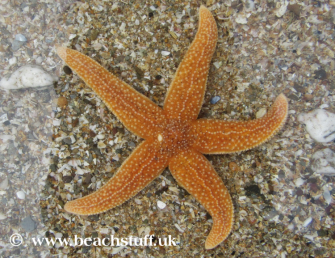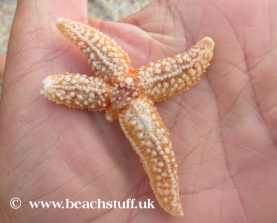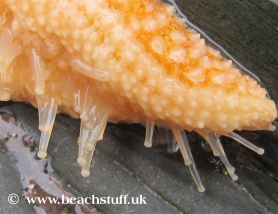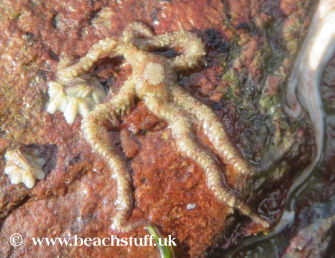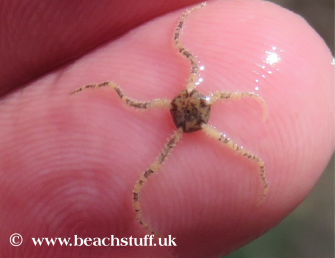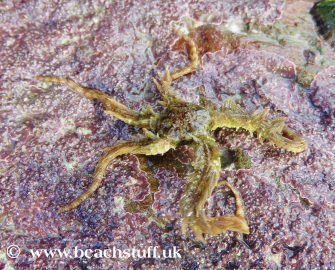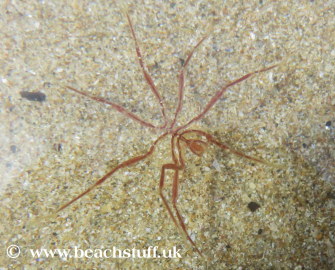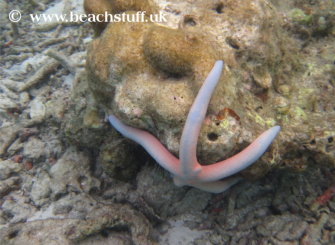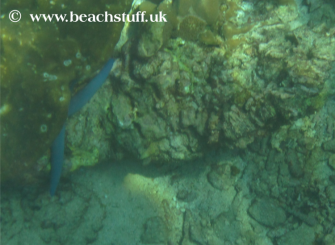

Common Starfish
Asterias rubens
These can be found clinging to the sides of rock pools - either in the water or out of it.
They usually have five arms - but it is possible to find ones with six arms - and the five armed ones can lose an arm or two and still survive.
Rockpool specimens tend to be around 8 - 12cm across.
Starfish can range in colour from light beige to deep rust-brown and purple.
If starfish lose a leg. they can grow one back - although it is very slow.
Starfish have hundreds of suction tubes that help them move around.
A starfish bulging like this suggests it is eating.
Mussels are a common choice for starfish meals.
Starfish eat by putting their stomach outside their bodies to digest their food.
A starfish retracting its stomach - clip is speeded up to double time.
Flexing its tube feet.
Common starfish often strand in large numbers on UK beaches-like these one seen in Musselburgh by Linda. There are lots of theories about why they strand like this (change in water temperature, a habit of balling up and leaving themselves at the mercy of the current?) but no real certainty about why it happens.
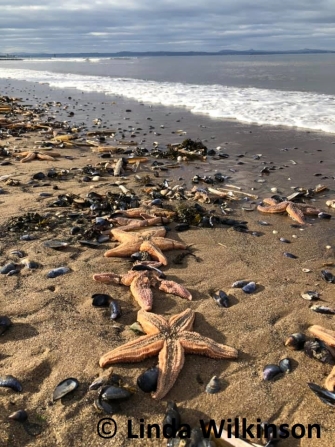
I found the tiny starfish below in rockpools on Salcombe Beach. The little leg - the only survivor from the original animal - has managed to grow four legs but also a body as well. This is only possible where a part of the body has remained attached to the initial leg.
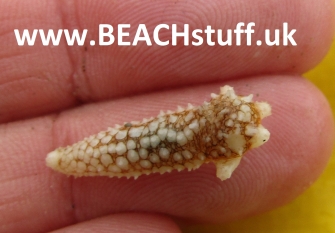
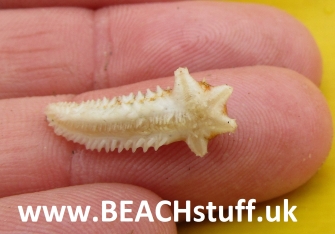

Cushions stars can vary in colour from orange through to brown and green.

This tiny baby, 5mm across, is dwarfed by a limpet shell.
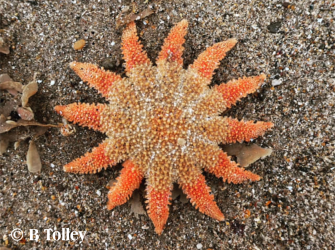
Sunstar
The sunstar has relatively short arms relative to the size of its body and around 10 or 12 of them. It is generally orange which really helps it to live up to its 'sun' name.

Seven-armed Starfish
luidia cillaris
In the UK, this large starfish is only found on the west coast. It can grow up to 50cm across - the specimen pictured being relatively small at at just 20cm across.


Several similar UK species
These are closely related to common starfish but have a rounder body and longer, more spindly legs. They use their legs to crawl around the sea floor looking for scraps (see the video clip below) which they pass to their mouths using those legs again.
They are usually found under stones at the lowest point of the tide. They can be very tiny.
Spiny Starfish
Marthasterias glacialis
This is our largest starfish and generally much larger than the common starfish (above).
It can be pale but is often bluish/greenish but is most distinguishable by the distinct lines of spines along its legs.
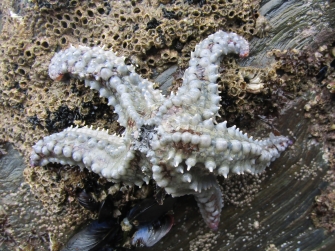

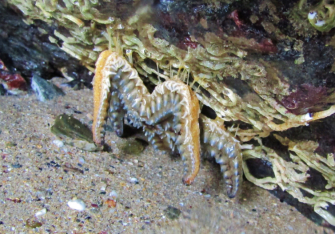


Sand Star
They live buried under the sand.
Sea Spiders
At first glance, you might think you've got a brittle star, but sea spiders are not even related. They are marine arthropods - a large group that includes insects, crabs and barnacles - seems that one thing they have in common is a large number of legs.
Cushion Star or Pillow Star
Culcita novaeguineae
Pacific Ocean, Indian Ocean
A lot bigger than the UK cushion star - it can grow to about 30cm wide. Like the common starfish, eats by ejecting its stomach and obsorbing its prey - mainly coral.
Blue Sea Star
Linckia laevigata
Pacific Ocean, Indian Ocean
This sea star can grow to around 30cm across - and is sometimes more blue (right) than others.
Crown of Thorms
Acanthaster planci
Pacific Ocean, Indian Ocean
The crown of thorns can have up to 21 arms and can grow to 35cm across.
It eats coral by excreting its stomach to cover almost the entire area of its
under-body.

